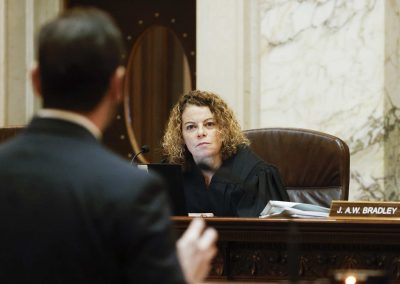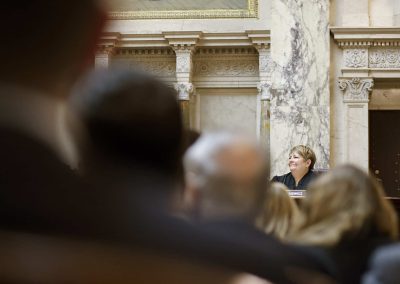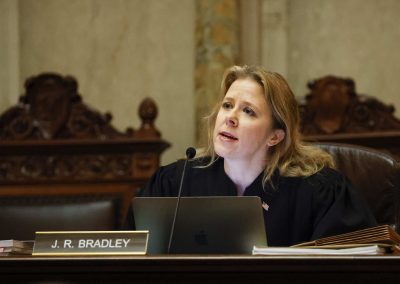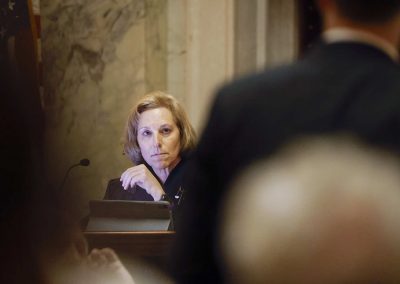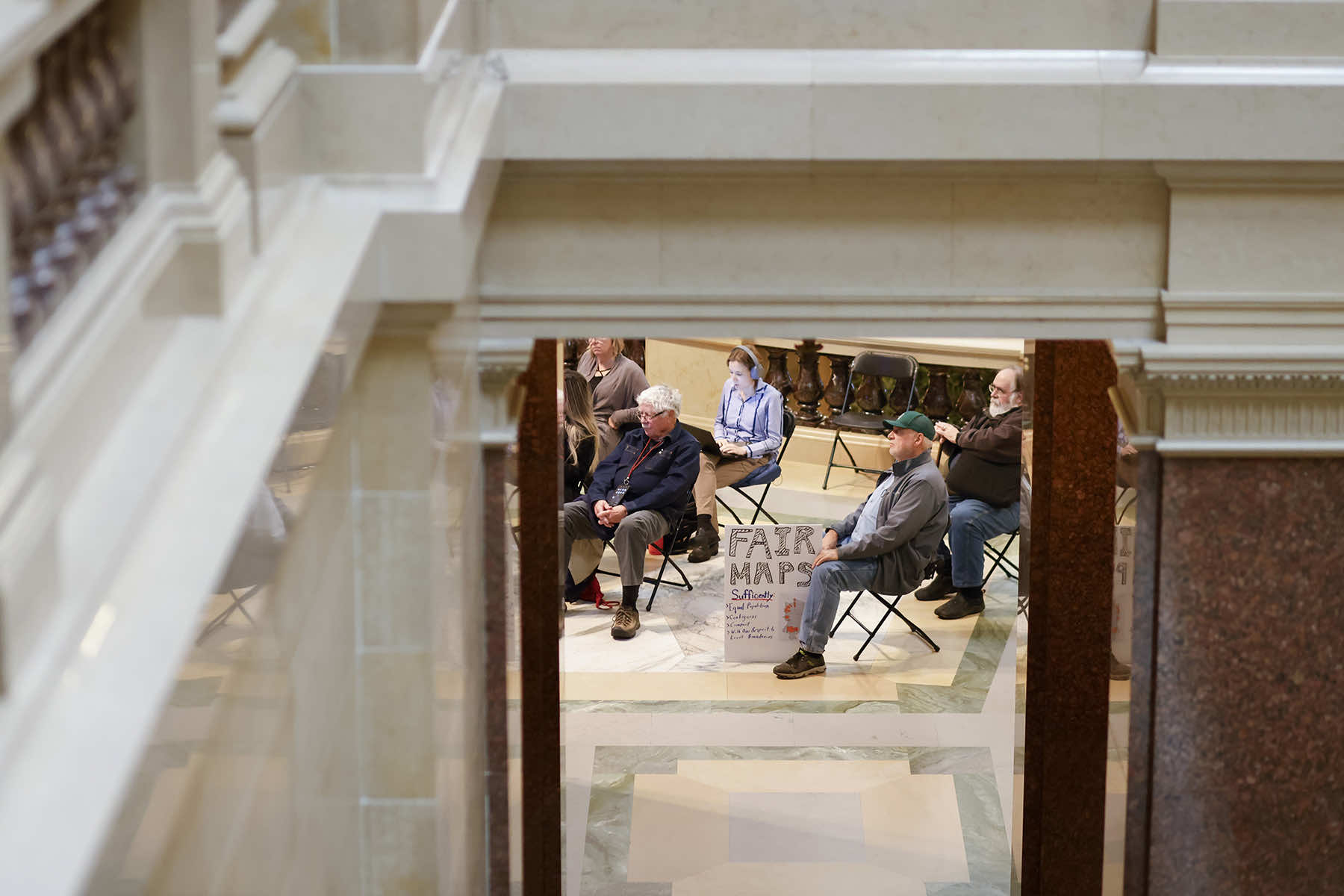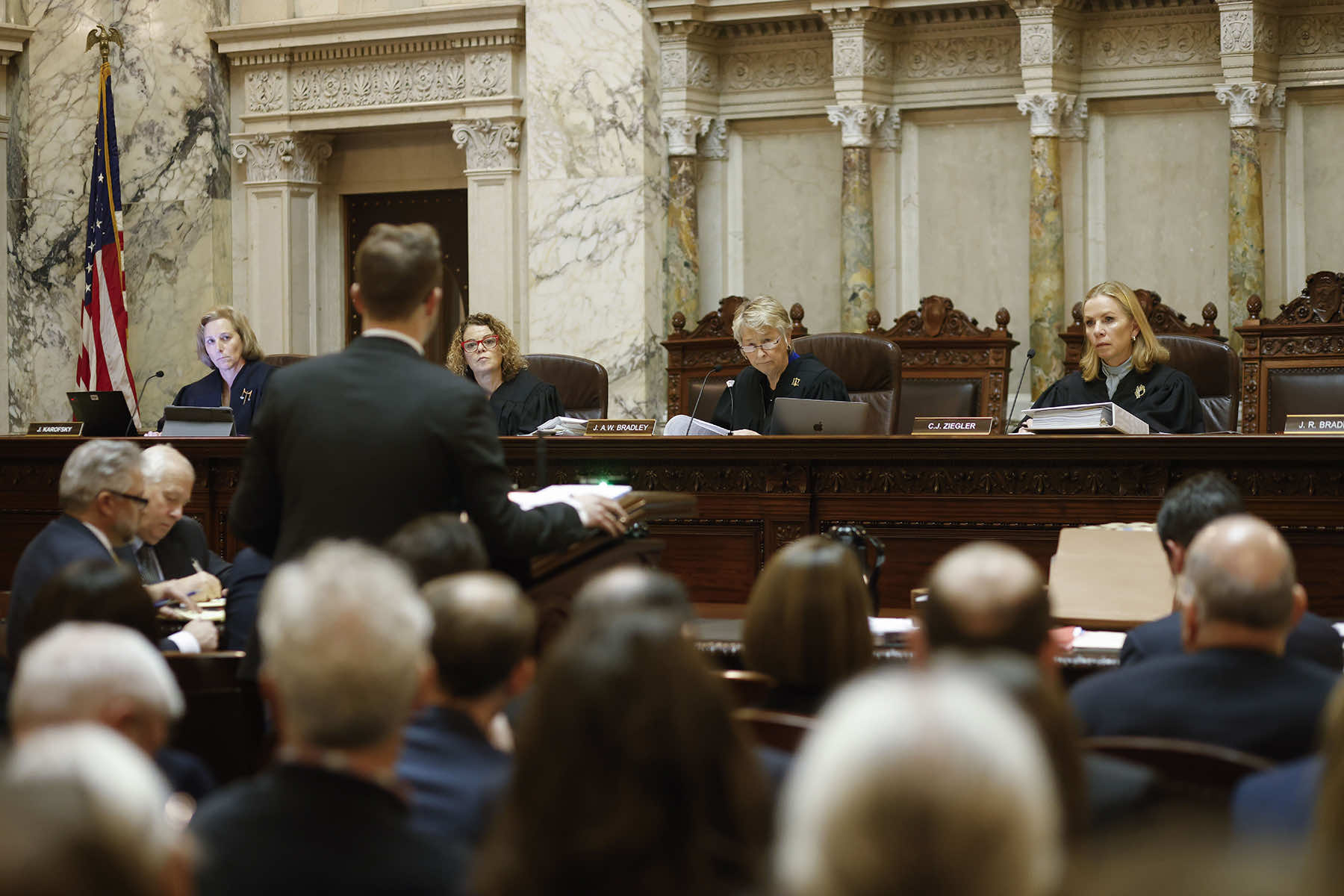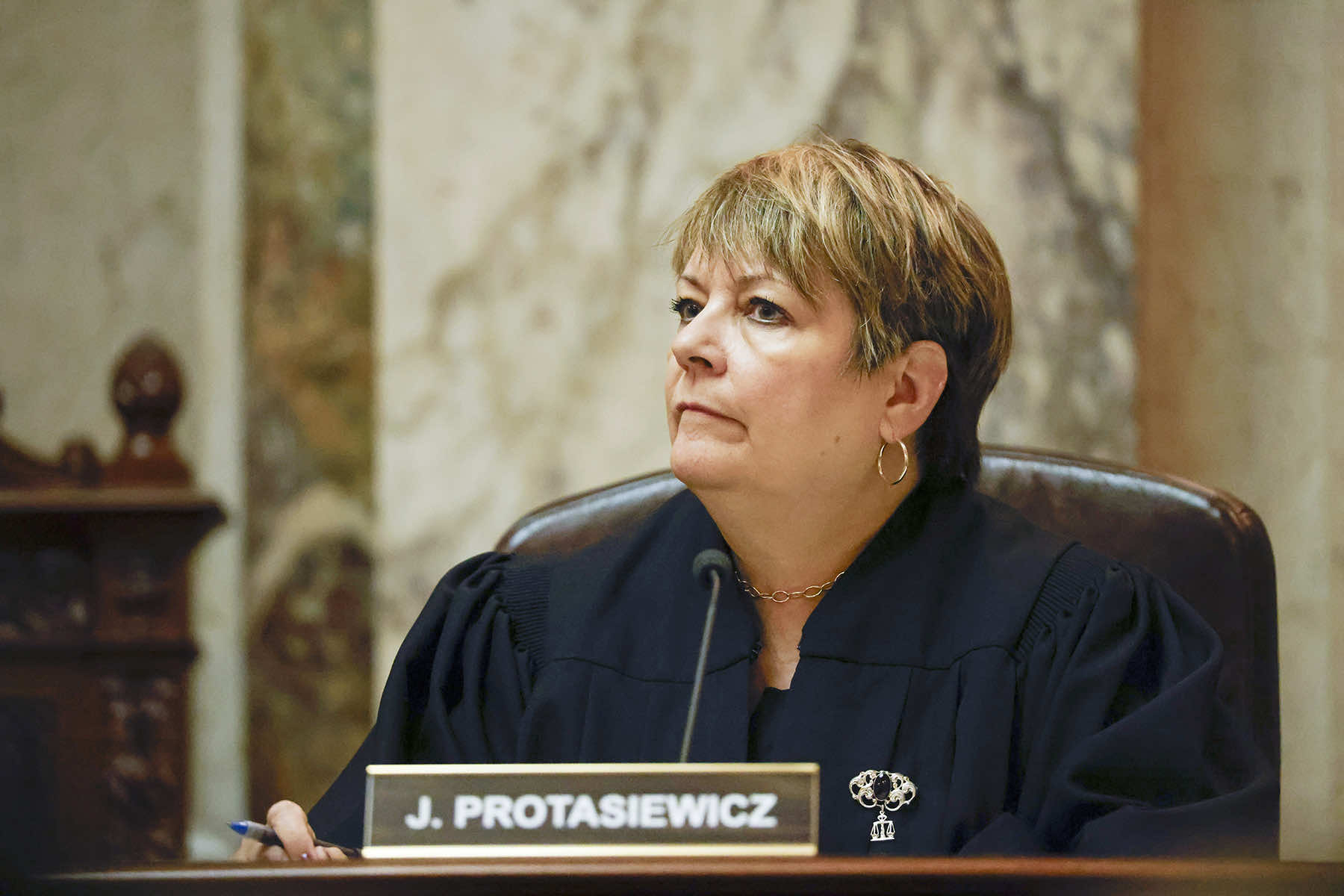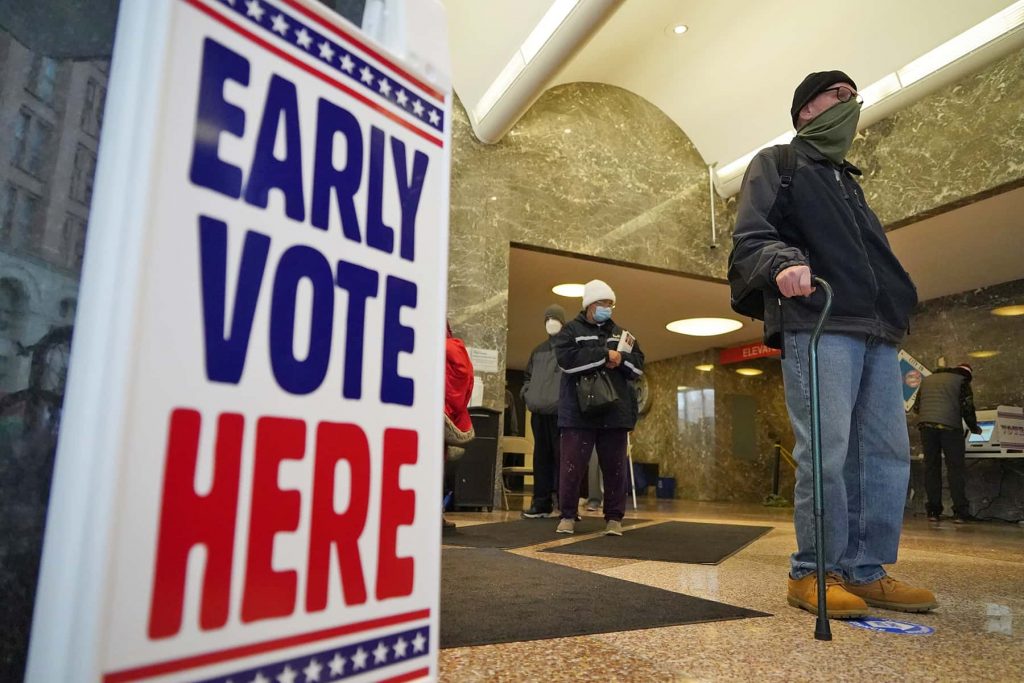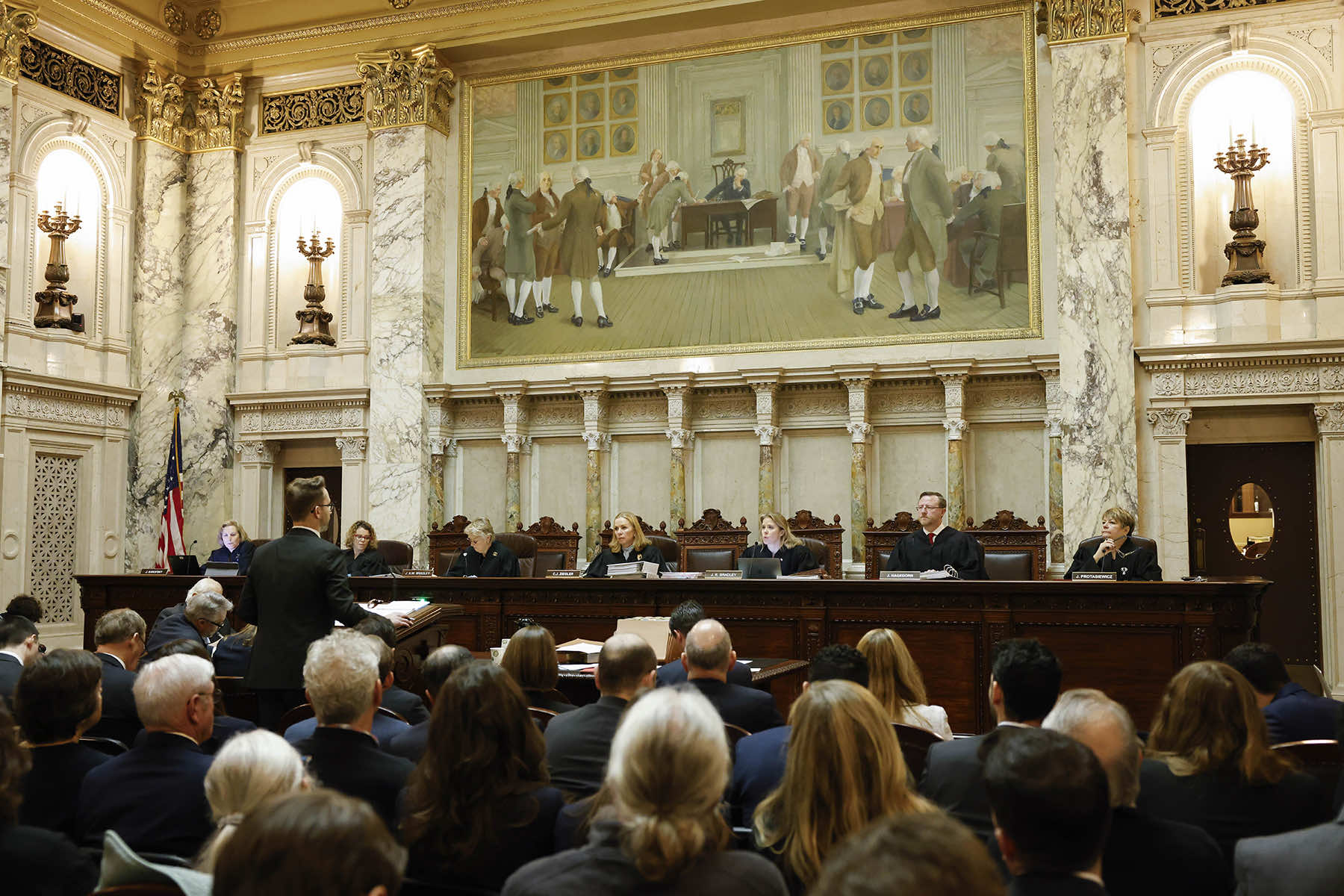
Democrats urged the Wisconsin Supreme Court to overturn Republican-drawn legislative maps in late November, with conservative justices questioning the timing of the redistricting challenge, while liberals focused on the constitutionality of the current maps and what the process should be for adopting new ones.
The fight comes ahead of the 2024 election in a battleground state where four of the six past presidential elections have been decided by fewer than 23,000 votes, and Republicans have built large majorities in the Legislature under maps they drew over a decade ago.
The lawsuit was brought by Democratic voters the day after the court flipped to majority 4-3 liberal control in August. They want all 132 state lawmakers to stand for election under new, more favorable maps in 2024.
Attorney Mark Gaber, from the Campaign Legal Center, said the timing of the lawsuit had nothing to do with the election result. He said the challenge over whether the districts are unconstitutionally not contiguous would have been filed, regardless of the makeup of the court.
“I don’t see that as a partisan issue,” Gaber said.
The court was expected to issue its ruling no later than early 2024. The state elections commission has said maps must be in place by March 15 if the new districts are to be in play for the November elections.
The Wisconsin Supreme Court has been controlled by liberal justices since Protasiewicz took her seat in August after her April election victory. She called the GOP-drawn maps “unfair” and “rigged” during her campaign, leading Republicans to threaten to impeach her before she had even heard a case. Republican Assembly Speaker Robin Vos backed off, but kept the threat alive if she votes to strike down the maps.
Protasiewicz asked mostly technical legal questions during oral arguments, and was not as involved in the back and forth with attorneys as other justices. The Democrats’ case in Wisconsin centers on whether the districts are not contiguous and if they violate the Wisconsin Constitution’s separation of powers doctrine.
Though the Wisconsin Constitution requires legislative districts “to consist of contiguous territory,” many contain sections of land that are not actually connected. The resulting map looks a bit like Swiss cheese, where some districts are dotted with small neighborhood holes assigned to different representatives.
“This shocks people across the country who look at this map,” Gaber said during oral arguments. “Wisconsin is the only state that has anything that looks anything like this.”
The Legislature argued for a more liberal definition of contiguous that allows for the creation of districts where all land masses are not physically touching. The Legislature also argued that Wisconsin’s redistricting laws, backed by state and federal court rulings over the past 50 years, have permitted districts under certain circumstances to be noncontiguous.
Liberal justices asked who would recommend new maps to the court if they ordered them, and what criteria should be considered when creating new lines.
Justice Brian Hagedorn, a conservative who sometimes rules with liberals, asked how the court can determine when a map is too partisan.
“How many Republicans are permissible?” he asked. “How many Democrats?”
Attorneys seeking new maps argued that in a competitive state like Wisconsin, who has control over the Legislature should shift from election to election based on which side gets more votes.
“There’s no magic number in this situation that needs to be met,” said Assistant Attorney General Anthony Russomanno, representing Democratic Governor Tony Evers.
The legislative electoral maps drawn by the Republican-controlled Legislature in 2011 cemented the party’s gerrymandered majorities, which stand at 64-35 in the Assembly and a 22-11 supermajority in the Senate.
A then-conservative majority on the court picked Republican-drawn maps in 2022 over maps drawn by Governor Evers. Litigation is ongoing in more than dozen states over U.S. House and state legislative districts enacted after the 2020 census.
New York’s highest court heard arguments in late November on whether an independent redistricting commission must take another crack at drawing congressional districts. New Mexico’s Supreme Court heard arguments on an appeal of a lower court ruling that rejected assertions the Democratic-led Legislature had illegally gerrymandered the state’s congressional districts.
A federal judge in North Dakota also ruled that state legislative districts drawn by the Republican majority violated the voting rights of two Native American tribes and must be redrawn by December 22.

